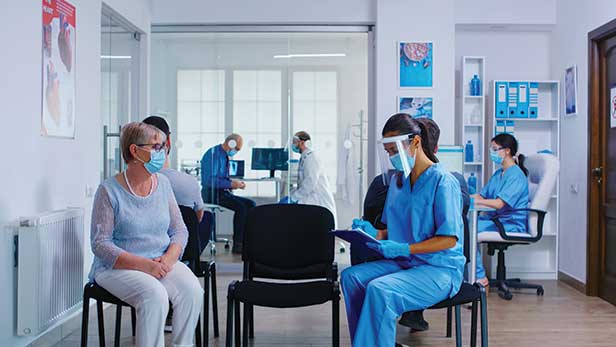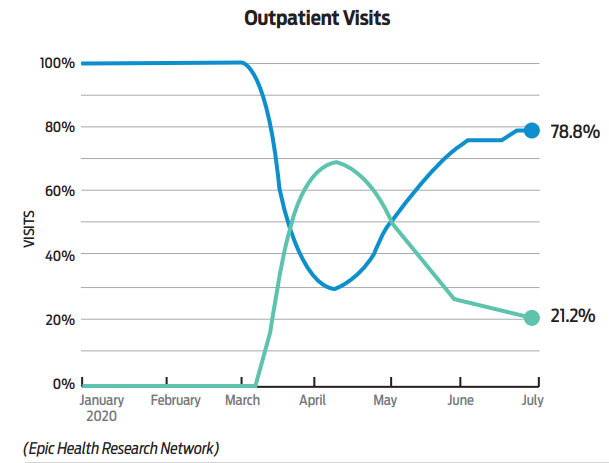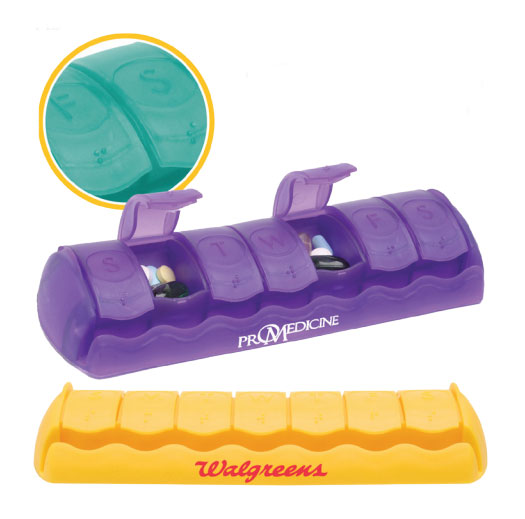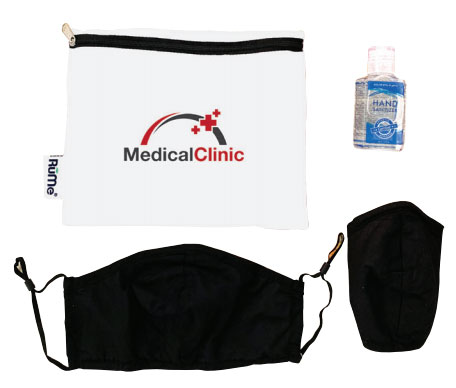Product Hub February 17, 2021
Promo Market Spotlight: Healthcare
The big (and perhaps only) winner of 2020 is rapidly growing and evolving.
The healthcare market boomed in 2020, thanks in no small part to the continuing COVID-19 pandemic ravaging the country. Last year, three of the Top 10 most-searched products in ESP were either personal protective equipment (PPE) or medical-related, with face masks and hand sanitizer the most prevalent. Moreover, projections from Counselor’s State of the Industry report pegged healthcare becoming the number-one promo end-buyer market in 2020, with an estimated 28% growth compared to 2019.
Suppliers and distributors verify the trend. Amber George, managing director with Top 40 distributor Boundless (asi/143717), has seen custom masks and hand sanitizer taking over sales this year in her local healthcare accounts. So has Barbara Buyers, senior national account executive at Shumsky (asi/326300), whose sales of PPE items for doctors – such as custom masks, gloves, foot covers, isolation gowns, disposable stethoscopes and face shields – have skyrocketed. Tim Lang, president and founder of Team Lang Promotions and now with Proforma (asi/300094), has been focusing on protection-related products and print, like floor stickers marking six-foot distances inside medical offices and signage for clinic windows telling customers the protection measures in place.

The previous year was one of radical change in so many ways, and that certainly applies to healthcare. Consider the typical healthcare client in the promo products industry. While normally it’s places like hospitals, doctor’s offices and clinics, the reality is that with all the PPE being sold, nearly anyone can be considered a healthcare buyer. “It’s important to understand that our definition of healthcare this year has broadened,” says Greg Armstrong, vice president of sales at Top 40 supplier Evans Manufacturing (asi/52840). Evans has typically sold to hospitals, clinics, health insurance companies and other essential businesses as one of its top three categories, but that client base has expanded to include pretty much anyone that wants PPE. “As an industry, our traditional definition of healthcare historically has been first-aid kits, pillboxes, bandage dispensers and items like that,” he says. “But it’s clearly broadened and expanded into PPE due to the pandemic.”
Lang agrees with that sentiment, saying, “Healthcare has held strong through the pandemic, but most of it has been wartime effort and not recreational buying,” he says. “For people to be successful selling to their existing healthcare clients or new clients, they need to be mindful of what healthcare is focusing on right now.”
Much of that focus is directed at telehealth. With elective surgeries canceled and things like therapy, prescription refills and visits that don’t require a physical exam all moved online, some distributors and suppliers have shifted the types of products they offer to meet the need.
“We’ve had to get really creative,” Buyers says about her sales to hospital networks. “We’ve come up with some inexpensive mailers that can be sent out. We’ve created logoed backdrops – both physical and digital – for some of these telehealth calls.” Those backdrops get shared with everybody and act as a traditional marketing tool. The mailers Buyers produces for her medical clients often have a QR code or some other interesting design; they go to patients ahead of time with a note of thanks for being a valuable part of that medical group. Buyers has even rethought logo placement on lab coats and scrub tops for the Zoom era. “Sometimes the logo is too low,” she says. “We’re adjusting the logo placement on the apparel so it’s visible on a video call.”
Lang says the rise in telehealth has created a promotional signage opportunity as well, whether it’s online signage like digital backdrops, or window signs advertising to patients that their doctor is offering online appointments.

Statistically Speaking: In the span of just a few short weeks this past spring, telehealth visits went from making up a negligible portion of all outpatient visits to accounting for nearly two-thirds. The percentage has dropped since then, but telehealth is still poised to become a permanent part of our medical routines.
Still, just as telehealth isn’t completely replacing in-person visits, it’s also true that opportunities remain for traditional promo products in healthcare. Buyers still does brisk sales of recognition gifts, stethoscopes and stands for sanitizers and thermometers (along with in-demand COVID items such as branded thermometers and touch-free tools like door openers). Armstrong says Evans still sells plenty of pillboxes and first-aid kits to hospitals. Sergio Munoz, director of sales at Debco Solutions, part of HPG (asi/61966), says the supplier is selling a lot of resistance bands to retirement homes. The challenge moving forward is shifting to new distribution channels.
“People can still use pillboxes and bandage dispensers,” Armstrong says. “These are not things that are suddenly useless because you’re doing remote healthcare. We’re now just challenged with, ‘How do I get it into your hands?’”
The items don’t even need to have a medical function. Lang, for example, just sent promotional products to a large group for a healthcare leadership meeting; each person received a box at their home containing bottled water, energy drinks, a hoodie and a Magic 8 Ball.
The promo industry has adapted PPE as a branding vehicle, but healthcare clients often need unbranded medical-quality PPE. Industry companies filled that void in 2020, but the expectation is that medical offices will return to their traditional suppliers (if they haven’t already). Armstrong thinks that’s a good thing and will lead promo suppliers and distributors back to a place of comfort. “We as an industry have shifted from logos or branded products to, in essence, medical supply,” he says. “And it’s not an arena that our industry has years of experience with. And now, we’re suddenly supposed to be product experts in medical supply.”
Distributors are also adapting to a lack of in-person contact with healthcare prospects and clients. Though “trying to get people on the phone is always the most productive,” George says, you might want to try other routes right now to reach nearby medical accounts, including local dentists, dermatologists or therapists. “Look to social media for intel and possible connections,” she says. “You can also do an online search for healthcare accounts in your region.”
Buyers, who reaches hospital networks via email, text, personal notes and small promo boxes in the mail right now, suggests changing the messaging when contacting potential sales opportunities. “I’ve been concentrating on reaching out but not bombarding,” she says. “And I think the intent of the reach-out versus how we’re reaching out is important. I’m spending more time asking my clients about their family and their work colleagues and their team at the office rather than just ‘Do you need an order?’”
It’s an important lesson: Be there to help and position yourself as an asset to aid healthcare organizations and the medical companies you sell to. “What we thought the need was seven months ago changed the day the world went into a lockdown,” Munoz says. “First, we need to understand how we can help, and then we need to be able to step up to the plate and provide products and solutions they need now.”
George agrees. “Reaching out and finding out what their initiatives are is important,” she says. “Being proactive with products to support those initiatives is a good way to secure business. You need to always show value.”
Product Picks

Traditional medical products still have a place with healthcare clients, such as this branded pillbox (3560). Available from Evans Manufacturing (asi/52840); evans-mfg.com

PPE will remain an integral part of the product mix for healthcare clients in 2021. Consider this kit (100666-001), which has two reusable masks, a 2-oz. bottle of hand sanitizer, and a RuMe washable pouch. Available from Gemline (asi/56070); gemline.com
Jennifer Billock is a contributing writer for ASI Media.

Product Hub
Find the latest in quality products, must-know trends and fresh ideas for upcoming end-buyer campaigns.
